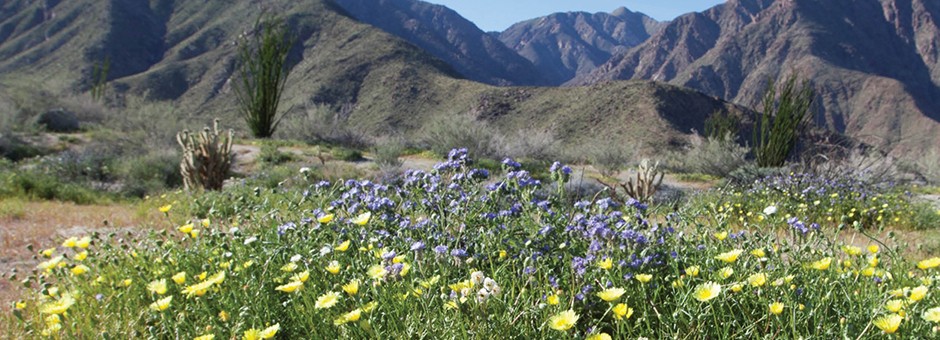
The County of San Diego jurisdiction is home to 26 distinct communities that vary from suburban densities adjacent to incorporated cities (i.e. Lakeside, Spring Valley and Sweetwater), to low density rural communities (i.e. Borrego Springs, Descano and Pine Valley) surrounded by hillsides, deserts and agricultural lands. The County is committed to helping communities thrive, protecting the region’s unique and diverse natural resources, and promoting sustainable economic development. One of the tools that the County uses to protect natural resources and promote sustainability is the Climate Action Plan.
Adopted in February 2018, the Climate Action Plan is a set of measures that focus on conserving energy and water, reducing the distance that residents need to drive to purchase goods and services, and reducing the amount of waste that each person generates, among other efforts in order to reduce our contribution to climate change. In its first year of plan implementation, the County reduced its greenhouse gas emissions by 103,643 metric tons of carbon dioxide equivalent (MTCO2e) and is on track to meet the its 2020 target of 132,205 MT CO2e (78% toward the target)!
The first Climate Action Plan Annual Monitoring Report summarizes the County’s progress through 2018 and is now available to the public online at the Climate Action Plan website, and at County libraries and other public buildings. The County has also revamped its Climate Action Plan website to be more interesting and engaging, more interactive, and to offer more ways to get involved in sustainability efforts.
Regional partnerships are a key to developing long-term strategies that promote healthy communities throughout the region and help the County achieve sustainability goals. See how the County has built on partnerships to advance these efforts over the past year in the following examples:
Conserving open space to protect wildlife and natural habitats
In 2018, the County partnered with the Escondido Creek Conservancy and the United States Navy to conserve 670 acres of Mountain Meadow. The preserve protects California gnatcatcher and orange throated whiptail habitat within willow scrub, chaparral, and Engelmann and coast live oak woodland in alignment with the County’s Multiple Species Conservation Plan.
Increasing energy efficiency
The County participates in San Diego Regional Energy Partnership, San Diego Association of Governments (SANDAG) Energy Working Group, San Diego Regional Clean Cities Coalition, and the Local Government Partnership through SDG&E to increase County operational energy efficiency and reduce energy consumption as outlined in the County’s Strategic Energy Plan and Zero Net Energy Portfolio Plan. This has enabled the County to exceed the Climate Action Plan target in reducing energy use intensity at its facilities.
Capturing rainwater for use in landscaping
Inland San Diego receives an average of 3-4 inches of rain per year. Rain barrels can capture 60 gallons of water from just 1/10 inch of rain from a 1,000 square foot roof. This captured water can then be used to water your garden and save on irrigation costs. The Solana Center for Environmental Innovation and the County work together to promote rain barrel workshops and sales events in the unincorporated county. In 2018, the County distributed 281 rain barrels to unincorporated county residents.
Local healthy food, avoided waste food
One of the most important efforts that the County is undertaking to increase community health and reduce waste is to promote and facilitate access to healthy and affordable food while also avoiding wasted food. In June 2018, the Live Well San Diego Food System Initiative worked in collaboration with food system and food donation organization in the region to publish a Food Donation Action Plan.
The County of San Diego Department of Public Works partnered with the Ramona Unified School District to create a pilot program to reduce wasted food. As a result, the school district prepares an inventory to avoid surplus meals. Students can share untouched food such as apples, carrots, milk or juice with their classmates at a Share Table. Leftovers from the Share Table are used for compost, to help grow more vegetables in the school garden. In 2018, the school district prevented 16,337 pounds of food matter from entering the landfill. Visit the Department of Public Work's website to learn more about how you can prevent wasted food or sign up for a free composting workshop.